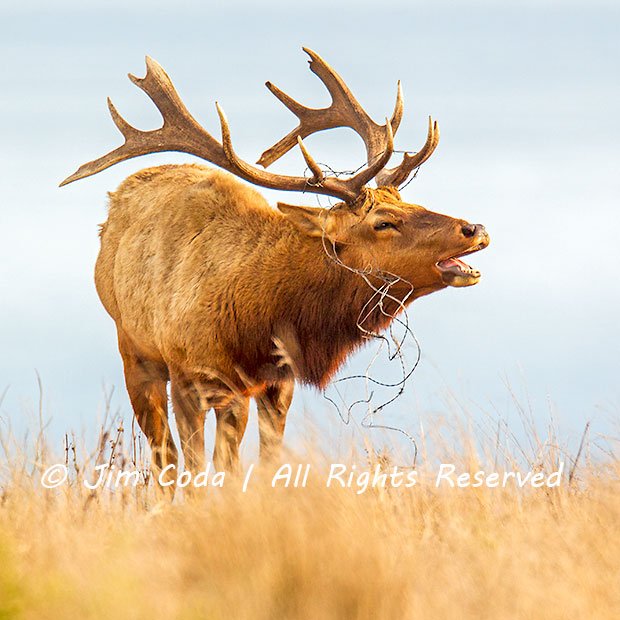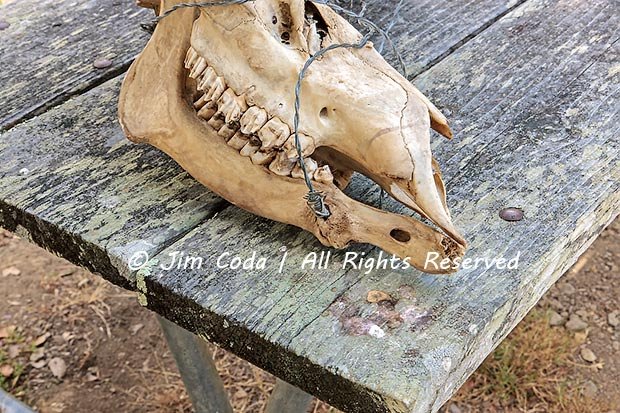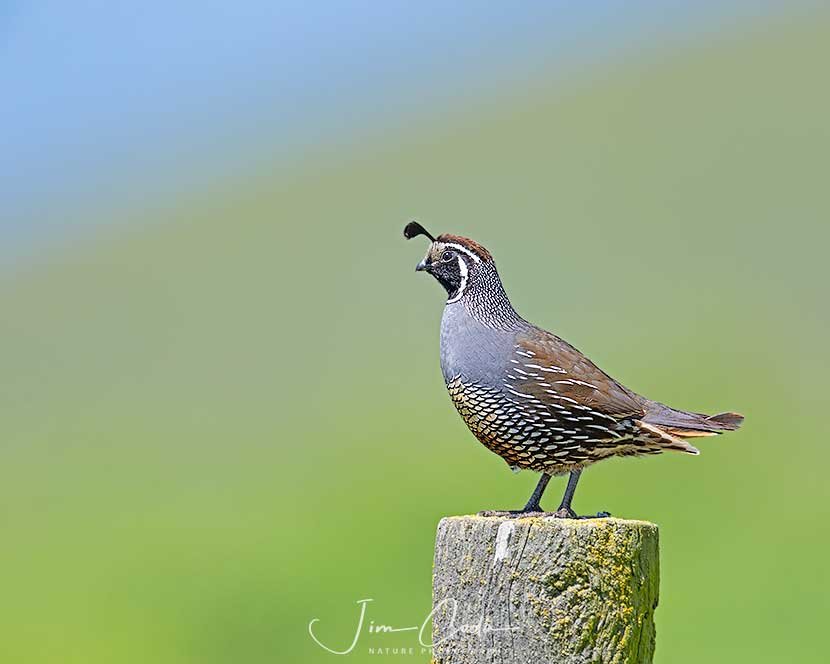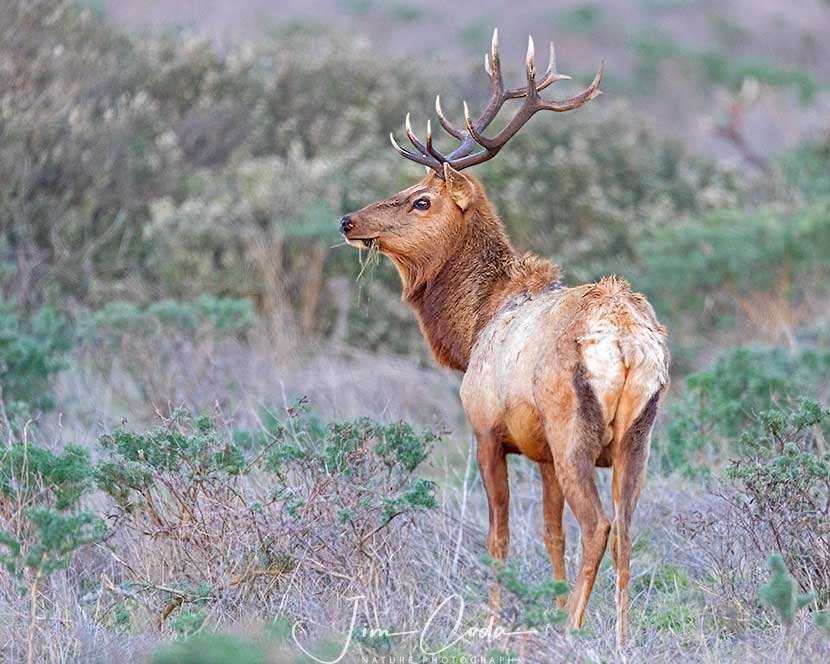New Fencing at Point Reyes National Seashore and It’s Not Wildlife-Friendly

New 48″ High Fence
New Fencing Along the Newly Reconstructed Section of Sir Francis Drake Boulevard Is Not Wildlife-Friendly.
The reconstructed section of Sir Francis Drake Boulevard has been opened to the public. I drove it a week ago. Along the south side of the road is a new barbed wire fence. It looked really tall to me so I stopped and measured it. It is 48 inches high. That’s way too tall for deer or elk to safely clear! The space below the bottom wire measured 12 inches. That’s way too low for fawns or elk calves to crawl under! There is 12 inches of space between the rest of the wires.
The Final EIS states that all new fencing, as well as replacement fencing, will be wildlife-friendly. The FEIS adopts the USDA’s Natural Resource Conservation Service (NRCS) spec for wildlife-friendly fencing. The NRCS spec adopts “A Landowner’s Guide to Wildlife Friendly Fences: How to Build Fences with Wildlife in Mind.” First edition (2008).
To view the NRCS spec/Landowner’s Guide, click here. It describes a wildlife-friendly fence as one that allows animals to jump over or crawl under it without injury. Page 8. More specifically:
- The top wire should be low enough for adult animals to jump over, preferably 40 inches, and “absolutely no more than 42 inches.” Id.
- The distance between the top two wires should be “[a]t least 12 inches,” so elk and deer won’t tangle their back legs with the top wires; Id. (For a photo showing what happens if the top two wires are not far enough apart, click here.)
- The bottom wire should be “at least 18 inches,” above the ground. Id.
- The top and bottom strands should be “smooth wire” (like regular two strand twisted barbed wire, but without the added barbs) so animals don’t get snagged and injured. Id.
- No vertical stays. Id.
Finally, the top wire should be made highly visible so mammals and birds see it when running or flying by using high visibility wire or sections of white pvc pipe, flagging or a top rail. Id.
To the best of my knowledge, the fence along Sir Francis Drake Blvd. is the first new fence since the FEIS for a new General Management Plan was released. Does it pass the fencing standards NPS promised it would follow in the FEIS for new fences? No. Far from it. I know the ROD hasn’t been signed yet, but come on. It will be signed soon.
It is not highly visible at all. No attempt has been made to meet that standard. It is 48 inches high, not the 42 inch (or the preferable 40 inch standard) considered the maximum height to allow adult deer and elk to jump over it. It does pass the 12 inch spacing between the top two wires. The bottom wire is only 12 inches from the ground, thereby failing miserably to meet the 18 inch clearance standard! Fawns and elk calves will not be able to crawl under it. The top and bottom strands should be smooth wire, but they aren’t. Finally, there should be no vertical stays, but there is one midway between every two posts. Another problem is that it doesn’t account for the fact that the fence is built on sloping land for much of its length. The photo above is an example. A deer standing on the road side of the fence is standing on land that is roughly one or two feet lower than the land the fence is on. That means the deer must jump much, much higher than the 48 inches. That is virtually impossible to do. If a deer could jump that high, it lands in thick brush.
This new fence violates every wildlife-friendly fencing requirement except the space between the top two wires. Furthermore, there are never any cattle along this stretch of road because the land behind the fence in covered in dense brush for as far as one can see. There is no reason for this fence. If there is some plausible reason why it should remain, then this fence should be modified to be wildlife-friendly and that should be done now.
After I drafted this article I called NPS to ask about the fence. I was told others had already contacted NPS about it. I asked why it was 48 inches high with only 12 inches clearance at the bottom in disregard of wildlife-friendly fencing standards promised in the FEIS. I received a call-back the next day and was told the fence height was a mistake and it would be lowered to 42 inches in height. As to the 12 inches at the bottom, I was told it was actually 14 inches and would remain at that height (and barbed, not smooth wire) because the fence along this section of road required a diversion from a wildlife-friendly fence design to keep cattle off the road. So much for the statement in the FEIS that “all new Fencing [sic] would be required to be wildlife-friendly.” Wildlife-friendly fencing was designed to be adequate for holding cattle whether it was along a road or not.
The fence section I measured a week ago had 12 inches of clearance at the bottom so when I was told it was 14 inches above ground I decided to drive out to the park and measure several random sections of the fence. First, a word about the measuring device I created. I took two yardsticks and, with the aid of rubber bands, I extended them so they became 48 inches in length. I also had a 12-inch ruler which I added to where the yellow yard stick had been slid up 12 inches. It provided an easy to see contrast at the 12 inch mark. The bottom wire in the photo is about 11.5 inches above the ground.
The measurements I got varied, but the most common measurement I got was 12 inches, give or take half an inch. You can tell it’s 12 inches at the bottom just by eye-balling it because each wire is equally spaced compared to the wire above and/or below it. Starting at the top wire, which is about 48 inches above ground, every wire below it is equidistant from the wire above and/or below it. Hence, if the top wire is 48 inches above the ground, the bottom wire is going to be 12 inches above ground.
But even if I had gotten mostly the 14 inch measurements NPS claimed, that would still be four inches less than the standard for a wildlife-friendly fence (and barbed)! I don’t see any reason for this fence to be there at all given the heavy brush that extends as far back as you can see. Cattle don’t go into areas of heavy brush. But even if there is a need for a fence there, it should be wildlife-friendly like NPS has committed to in the FEIS.
NPS’s Promise to Convert All New and Replacement Fencing To Wildlife-Friendly Fencing Throughout the Two Parks.
In looking at the FEIS to see what it says about wildlife-friendly fencing, I just realized something that I don’t think I realized about NPS’s statement to convert to wildlife-friendly fencing when I read the DEIS. The FEIS states as follows: “Fencing—Approximately 20% of the 340 miles of existing fencing would be replaced, 24 miles of fence would be installed for the Resource Protection subzone, and an additional 35 miles of new fence would be constructed to improve livestock management over the 20-year lease/permit term. NPS anticipates up to 5 Fencing projects annually.” FEIS at 110. (Emphasis added.)
So, only 20% of 340 miles of fencing will be replaced during the 20-year lease/permit terms per the preferred alternative in the FEIS. Twenty percent in 20 years is one percent per year or 3.4 miles per year. To do 340 miles would take 100 years. What a joke! Point Reyes National Seashore and Golden Gate National Recreation Area are units of the national park system. There should be no fencing at all. If any fencing is to remain, it must be converted to wildlife-friendly fencing now – regardless of which ranching alternative is chosen. What is NPS’s reason for this lack of any real action?
NPS gives it in the FEIS’s Appendix: “While all new Fencing would be required to be wildlife friendly, the EIS does not require that existing fencing be changed until it needs to be replaced because replacing all fencing would be cost prohibitive. NPS would work with ranchers as needed to make adjustments to fences that pose a threat to wildlife. In areas where elk occur, fences would be repaired and/or replaced with wildlife-friendly fence designs that reduce the extent of damage by elk, and as existing fencing is replaced, it would be replaced with wildlife-friendly Fencing.” FEIS, Appendix at P-42. (Emphasis added.)
Cost? That is not good enough. As stated above, fencing doesn’t belong in the national park system and neither do beef and dairy cattle. If cattle are going to be kept in a unit of the national park system, then the fencing must be made wildlife-friendly now, not 20, 40, 60, 80 or 100 years from now. Each ranch should be able to complete that work in a year. Another option would be for NPS to take on this responsibility. The 1906 NPS Organic Act and the two park statutes require fencing that is friendly to wildlife now, not up to 100 years from now.
If you agree that NPS should fix the new one or two mile stretch of fencing along Sir Francis Drake Blvd. with a proper wildlife-friendly fence immediately and complete the conversion of all the rest of the fencing in the two parks to wildlife-friendly fencing in the next twelve months, send an email to Craig Kenkel, the new Superintendent at Point Reyes National Seashore, at Craig_Kenkel@nps.gov, or send a letter to him at 1 Bear Valley Road, Point Reyes Station, CA 94956.


 A Point Reyes National Seashore (PRNS) Bull Tule elk with Barbed Wire Caught in His Antlers
A Point Reyes National Seashore (PRNS) Bull Tule elk with Barbed Wire Caught in His Antlers Skeleton of a PRNS Bull Elk Who Died Because Barbed Wire Caught in Antlers Prevented Him from Opening His Mouth.
Skeleton of a PRNS Bull Elk Who Died Because Barbed Wire Caught in Antlers Prevented Him from Opening His Mouth.

